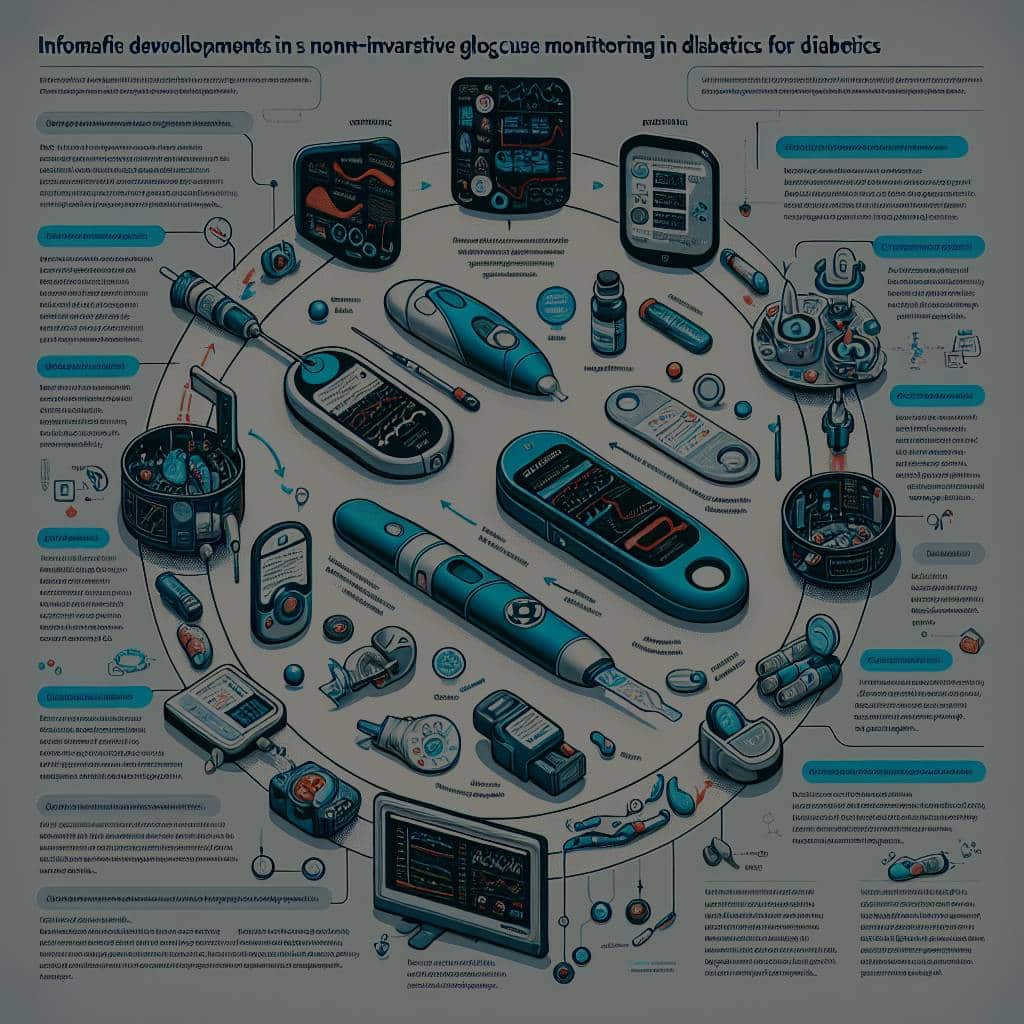What Are the Latest Developments in Non-Invasive Glucose Monitoring for Diabetics?

Modern Benefits of Non-invasive Glucose Monitoring
One of the greatest advancements in recent times has been the evolution of non-invasive glucose monitoring technology. For those of you dealing with diabetes, this is a game-changer. Traditional blood glucose monitoring methods require finger pricks, which can be painful and inconvenient. Thankfully, non-invasive approaches are developing rapidly, providing an alternative method of monitoring glucose levels without the need for skin puncture.
Spectroscopy-based techniques are one of the most popular non-invasive methods. This technology works by using light to analyze the concentration of glucose in the blood. The light is absorbed by the glucose in the blood, and the sensor measures the amount of light that comes out. This method has shown great promise in clinical trials, and several devices using this technology are already on the market.
Topic to read : How can chatbots help with waste and recycling management ?
Spectroscopy-Based Non-Invasive Glucose Monitoring
Spectroscopy-based technology is a popular and promising approach to noninvasive glucose monitoring. The method involves the use of light and its interaction with tissue. When light, usually in the near-infrared spectrum, is directed onto the skin, it penetrates the tissue and is absorbed, reflected, and scattered. The scattered light is then captured by a sensor, which analyses the light to calculate the glucose concentration in the blood.
One notable device that uses this technology is GlucoLight’s Sentris-100. This optical glucose sensor provides real-time, continuous glucose monitoring without the need for any invasive procedures. The device is small, lightweight, and easy to use, making it an ideal choice for people with diabetes who want to avoid the discomfort of regular finger pricks.
Also read : How Is Blockchain Contributing to the Creation of Decentralized Social Media Platforms?
Time-Based Non-Invasive Glucose Monitoring
Another significant development in non-invasive glucose monitoring is time-based technology. This method involves the use of a sensor that is worn on the skin. The sensor measures the glucose levels in the interstitial fluid, which is the fluid that surrounds the cells of the body. This method provides continuous glucose monitoring, which allows you to see trends and patterns in your glucose levels over time.
One of the most well-known devices that use time-based technology is Abbott’s FreeStyle Libre. This device involves a small sensor that is applied to the back of the upper arm, where it can be worn for up to 14 days. The sensor measures glucose every minute, providing real-time readings and trends. This device eliminates the need for routine finger pricks and offers a more comprehensive view of glucose levels over time.
The Role of Crossref and Google Scholar in Diabetes Technology Research
In the realm of scholarly research, Crossref and Google Scholar have been instrumental in advancing the understanding of diabetes and the development of non-invasive glucose monitoring technology. These platforms provide access to a vast amount of scientific literature, which is crucial for researchers. They provide a platform for scholars to share their findings and collaborate with others in the field. They also facilitate the discovery of new technologies and approaches to diabetes management.
Specifically, numerous studies available through these platforms have substantiated the reliability and effectiveness of spectroscopy and time-based non-invasive glucose monitoring techniques. Queries on these platforms yield a wealth of articles and papers detailing the science behind these technologies, their development, and their potential implications for diabetes management.
The Future of Non-Invasive Glucose Monitoring
With the rapid advancement of technology, the future of non-invasive glucose monitoring looks promising. Researchers and developers are consistently working on improving the accuracy and convenience of these devices. Also, with the increasing prevalence of diabetes worldwide, the demand for these non-invasive devices is expected to grow.
The field is also exploring other non-invasive methods, such as those using ultrasound and thermal technologies. Furthermore, the integration of glucose monitoring devices with smartphones and other digital platforms is also a growing trend, offering an even greater level of convenience to users.
In summary, the future of non-invasive glucose monitoring is bright, with several promising technologies already making a significant impact on the lives of those with diabetes, and numerous potential advancements are on the horizon.
Integrative Technologies for Non-Invasive Glucose Monitoring
Emerging developments in non-invasive glucose monitoring technology also include the integration of these devices with smartphones and other digital platforms. This application of technology is not only user-friendly but also provides real-time glucose levels, which can be crucial for diabetics to maintain their blood glucose concentration within a safe range.
One example of this integrative technology is the Dexcom G6 CGM system. This device uses a small, wearable sensor and transmitter to continuously monitor your glucose levels and sends this data directly to your smartphone. You can view your glucose data in real-time on your phone, and the system even includes an alert feature that warns you if your glucose levels are too high or too low.
Similarly, the FreeStyle LibreLink app works in tandem with the FreeStyle Libre sensor mentioned previously. This allows users to scan the sensor with their smartphone to retrieve glucose data. The app also provides a detailed, visual snapshot of glucose trends over time, which can be extremely useful in diabetes management.
In addition to smartphone integration, non-invasive glucose monitoring systems are increasingly incorporating artificial intelligence (AI). AI can help analyze glucose trends, predict future glucose levels, and suggest lifestyle modifications based on the data. It’s a growing field, and giants like Google are investing in developing AI for diabetes management.
Conclusion: The Promising Path of Non-Invasive Glucose Monitoring
The landscape of non-invasive glucose monitoring is continuously evolving, with several promising technological advancements on the horizon. With the increasing global prevalence of diabetes mellitus, the need for efficient and painless blood glucose monitoring is more apparent than ever.
The development of spectroscopy-based, time-based, and integrative technologies for glucose monitoring is a testament to the progress in the field. Platforms such as Crossref and Google Scholar are crucial in this journey, providing researchers with valuable resources to build upon existing knowledge and propel further innovation.
While current devices have already significantly improved the quality of life for many individuals with diabetes, the future holds even more promise. Researchers are exploring new methods, including the use of ultrasound and thermal technologies for glucose detection.
Furthermore, the integration of AI into glucose monitoring systems holds immense potential. With AI’s predictive capabilities, individuals can get a more accurate understanding of their glucose levels, leading to better diabetes management.
Indeed, the world of non-invasive glucose monitoring is rapidly advancing, and we can expect to see continuing progress in technology, user experience, and clinical outcomes. With the collective efforts of researchers, medical professionals, and tech developers, it is hopeful that managing diabetes will become increasingly efficient and less invasive.
